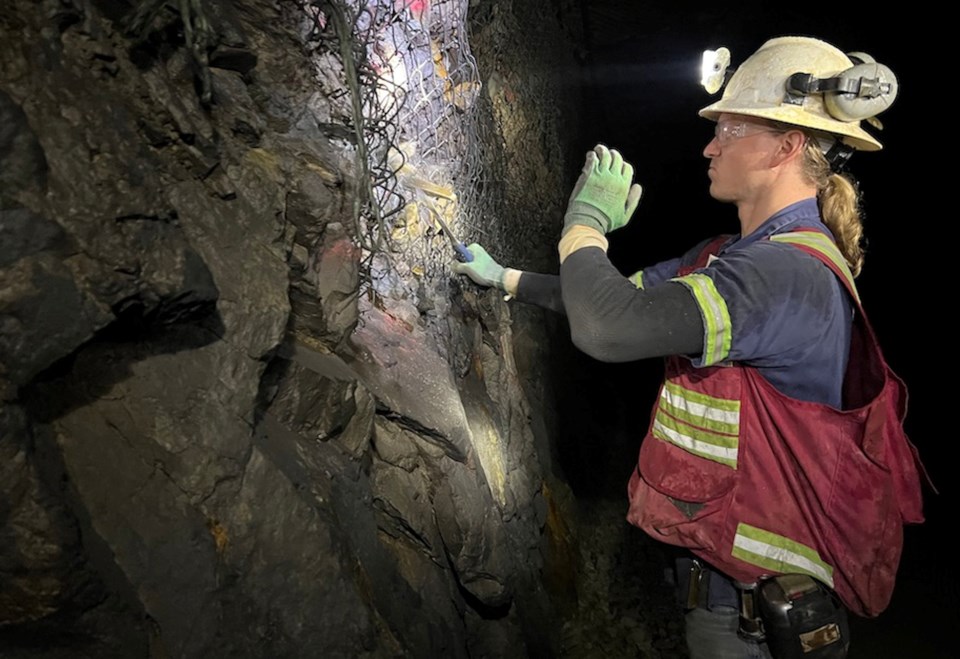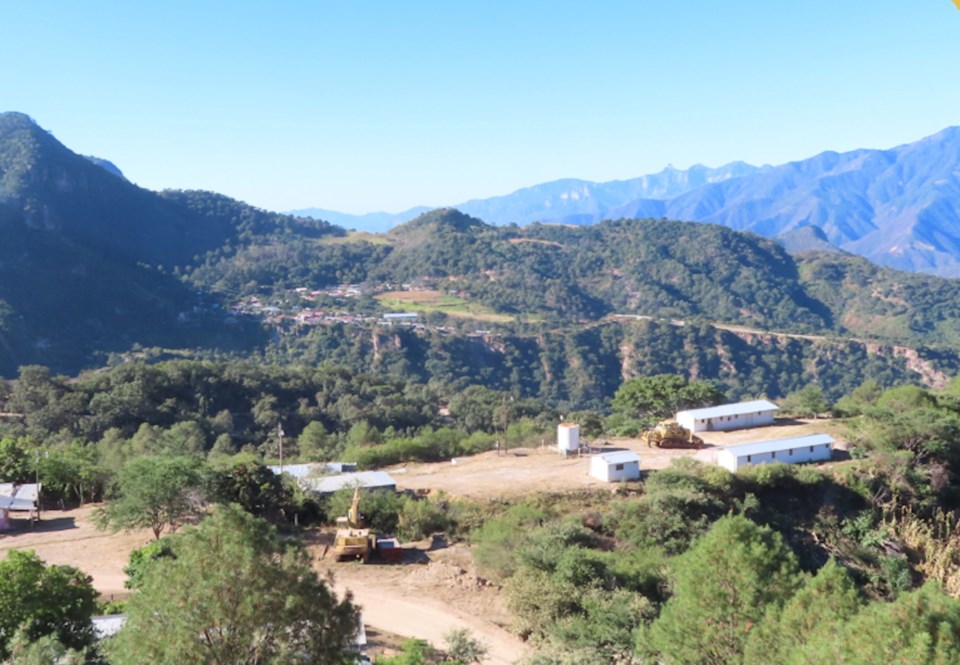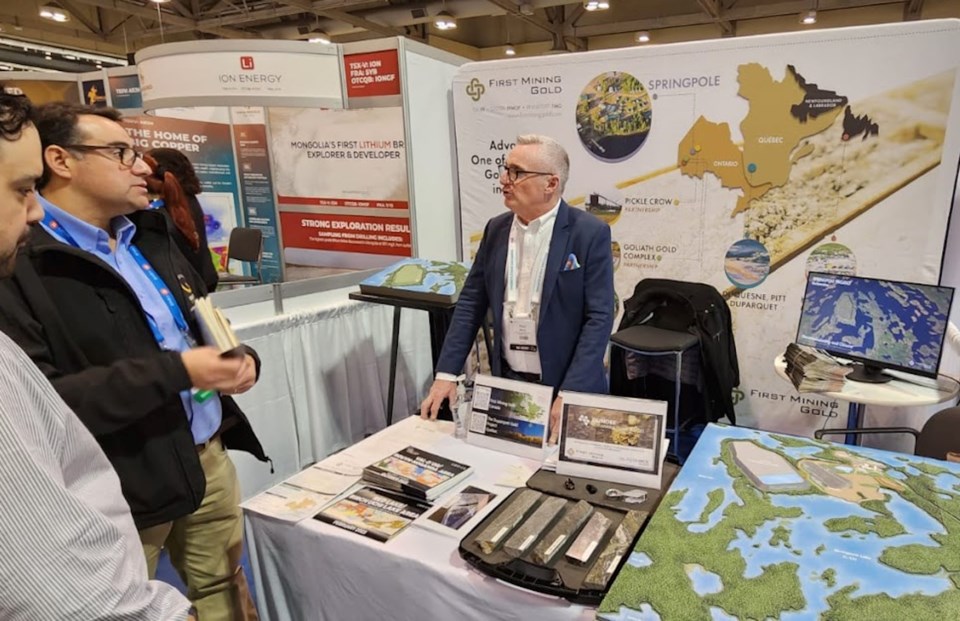Society is driving the mining industry toward reducing its carbon emissions.
But when “the rubber hits the road,” said one gold mining executive, the project financing to help put new mines into production is not there to pay for it.
Alan Pangbourne, president-CEO of Chesapeake Gold, said the trend among mine developers is all about measuring carbon emissions. That’s great if you’re already an established operation, but promoting a clean and green mine to the financial markets doesn’t move the project yard sticks.
He was one of three three gold mining executives that took part in an Invest 6ix web panel discussion last week on Mining in North America.
The hour-long discussion focused on challenges and opportunities in each jurisdiction where their respective companies have mine projects.
Carbon emissions and how they impact their respective project development stories is one topic that came up in the conversation.
“If you’re the filthiest miner on the planet and you reduce to zero, you probably can get money to do it because you’re already operating and you’ve got proven cash flow,” said Pangbourne.
His company is looking to bring into production one of the world’s largest gold and silver projects in the Mexican state of Durango.
Promoting a mine that uses 90 per cent less power and water is nice, but it attracts no interest from financiers, he said.
“But if you walk out there and say my project is greener than the alternative, it gets no traction.”
A 2021 McKinsey report on Creating the Zero-Carbon Mine said the industry is facing pressure from regulators, investors, and customers to decarbonize operations. Access to market capital, the report said, is now more frequently dependent on sustainability.

Richard Williams, executive director of Bunker Hill Mining, doesn’t find that to be the case.
Williams said he pitched the sustainable mining concept to various impact funds and private equity groups — “it made no difference.”
“Fundamentally, it’s about whether the mine economics works,” he said. Though admittedly “very keen” on having a carbon neutral operation in the future, “I just can’t afford it on day one.”
His remarks drew smiles and understanding nods from the panellists.
“It doesn’t mean we’re starting a dirty mine. It means that it's not as clean it could have been if the money was available.”
With oversight from the U.S. Environmental Protection Agency, his company is behind a 2024 restart of a storied silver and base metal mine in the hills of Idaho. The legacy site was left a toxic mess by mining companies generations ago.
Williams said they can get to net zero relatively quickly by tapping into to ‘green’ power coming off the Pacific Northwest grid. But to take that next step and totally electrify the operation, the market these days has no interest in carbon neutrality.
“There’s no more money available for me just because I have a net zero plan.”

“It’s like the argument about ride your bike or drive the car,” added Pangbourne. “If I buy the bike, I get no carbon credit for it. If I buy a car and then change it for an electric car, I’m doing the right thing.
“It’s a perverse view of the world at the moment. Unless there is an economic driver … it’s a fallacy that funds and people are prepared to fund the new green dream, or whatever it’s called.”
Dan Wilton, CEO of First Mining Gold, said when it comes to scoping projects, developers have to look at all kinds of technological opportunities to reduce costs.
In the case of an operating underground mine, a logical business case can be made to switch to an electric fleet because it translates to less money spent on ventilation.
Wilton's development company is advancing two gold open-pit projects: Springpole, between Red Lake and Pickle Lake in northwestern Ontario, and Duparquet in the Abitibi region of Western Québec.
Wilton said their focus is the cost of diesel with an eye cast down the road to the cost of carbon emissions in 2035 when they’ll be moving millions of tons of rock.
At Springpole, bringing the project into production means driving infrastructure into a remote location to create a corridor to service the pit operation as well as broaden economic development opportunities for Indigenous communities in the project area.
Wilton said weighing what’s good for the project economics and what’s beneficial for the environment by reducing the carbon footprint opens all kinds of questions.
In jurisdictions like Québec, where industrial power is at attractive rates, somewhere there is a tradeoff that works where a company doesn’t have to buy diesel fuel.
“It’s an interesting conundrum.”
Wilton said the industry is getting better at thinking laterally, such as asking, why use haul trucks and not conveyors?
“As an industry, we need to keep asking those questions and driving for solutions because, at some point, it’s going to make a big difference and it is going to be important to investors and important to our local communities.”
Williams said there a number of tradeoffs to consider in evaluating the costs that drive your project forward.
In Canada’s Far North, the big challenge is the cost of power and logistics, he said.
But if small modular nuclear reactors can be permitted and deployed, a company can access a low-cost, green source of power, and the project economics become better, said Williams.
“But what’s driving it is the economics, not the environmental benefit.”
When the discussion turned to what are the main challenges faced by precious metal companies in North America, all three executives mentioned permitting, which has become, basically, social acceptance of a mine project.
In many jurisdictions, the permitting process can range from “reasonable to slow to impossible,” said Pangbourne, based on environmental groups, supportive governments, or governments signing international socioeconomic agreements that adversely impact the industry.
“That can create ambiguity as you’re going through the process.”
Williams said the length of time it takes regulators to permit a mine, in North America and abroad, can be “exceedingly hard” when you’re trying to preserve investor interest.
While there’s plenty of talk about authorities wanting to shorten permit timelines, Williams said he’s seen no tangible evidence on what’s being done on that front.
For permitting, his Bunker Hill project had to deal with mining legacy issues before they could get moving. That only gets tougher in a competitive financing environment. Since the 2008 global meltdown, he finds the availability of capital has been “crushed” as investors turn to cryptocurrrency, cannabis and high-tech stocks.
“Nothing is easy, that’s the real takeaway,” said Wilton, as permitting timeframes, over the last 15 to 20 years, have continued to lengthen.
“There was a time when it was a reliable couple-of-years process to get approvals for major mines when you had all of your work done.”
Government ministries are more thorough in safeguarding the environment, and he agreed the lagging timelines can put a developer in a tough spot to continue to attract capital.
But Wilton said they consider themselves fortunate to be working ground in Ontario. The province is known in the industry as one of the world’s best jurisdictions to operate in.
Despite much “handwringing” over permit times, “I don’t know of a jurisdiction that has permitted more mines in the last 20 years.”
He said Ontario has an “exceptional track record” in approving projects through to production.
Today, Wilton added, Queen’s Park certainly possesses the political will to put more mines into production faster with the selection of former mining exec George Pirie as a mines minister.
Pirie “absolutely hit the ground running” in establishing a mines ministry industry council with 20-some operators and developers around the table, and has passed the Building More Mines Act to make regulatory changes for the more efficient permitting of mines, he said.
“This is a place that understands and appreciates mining to the economy in Ontario.”
